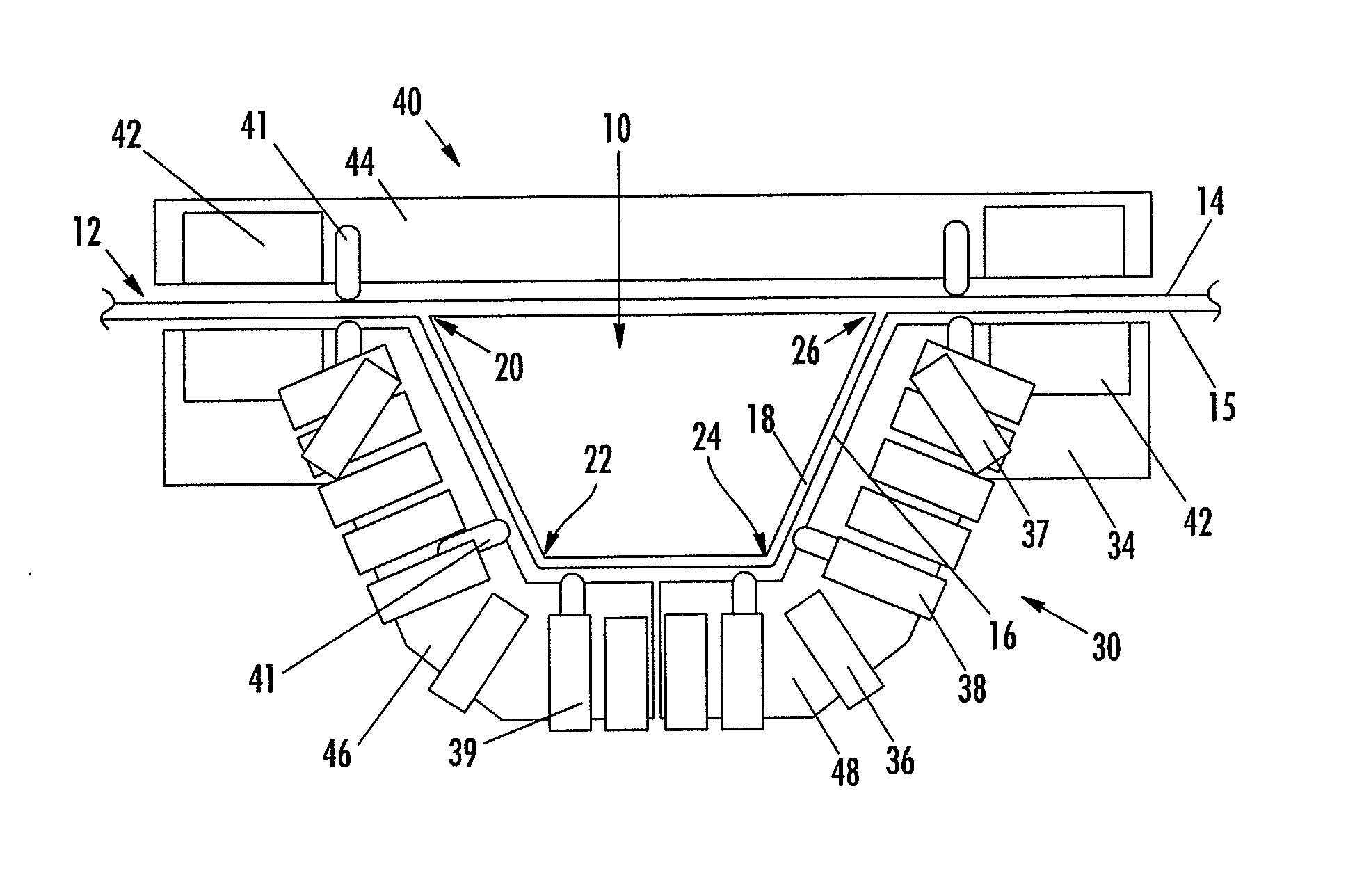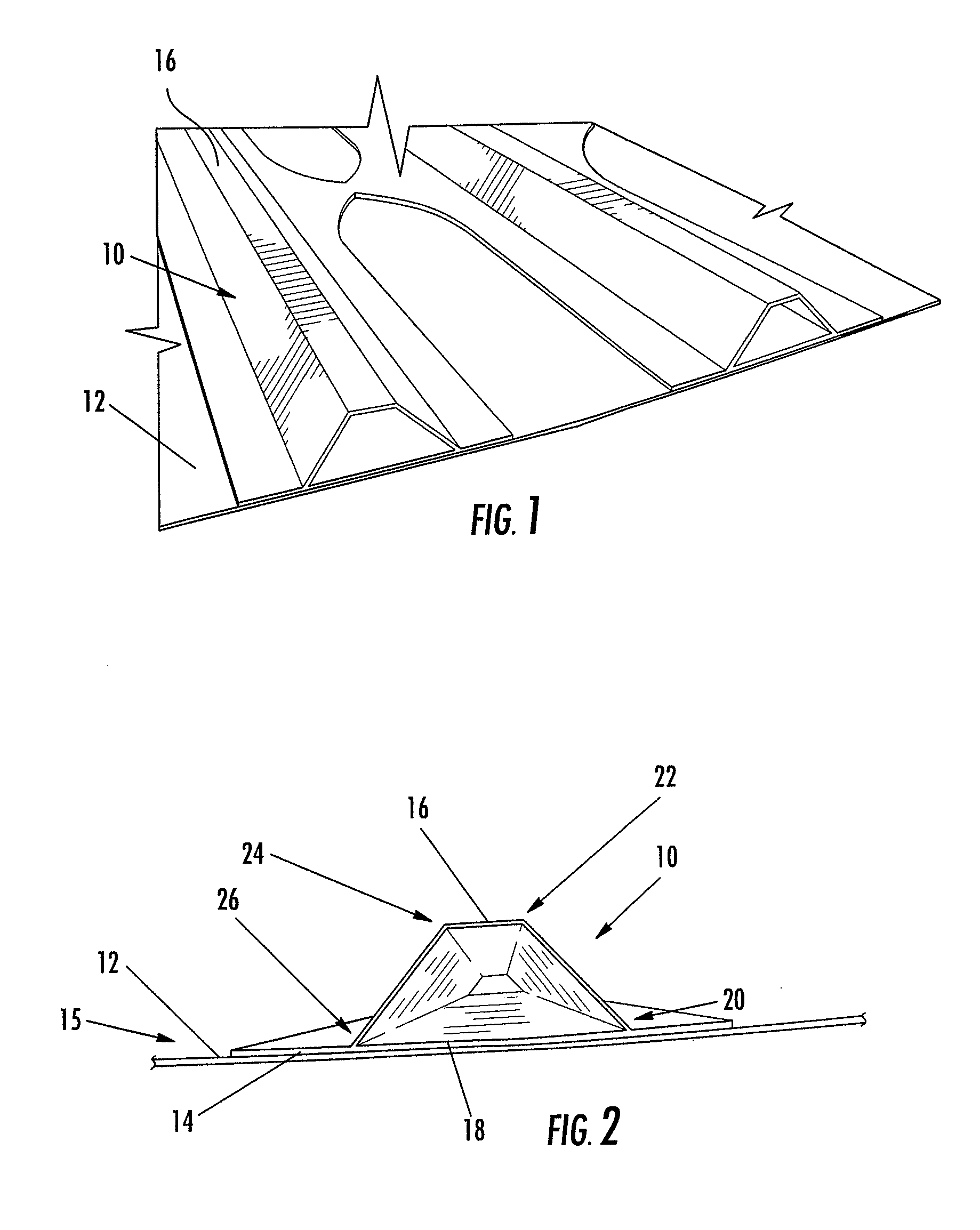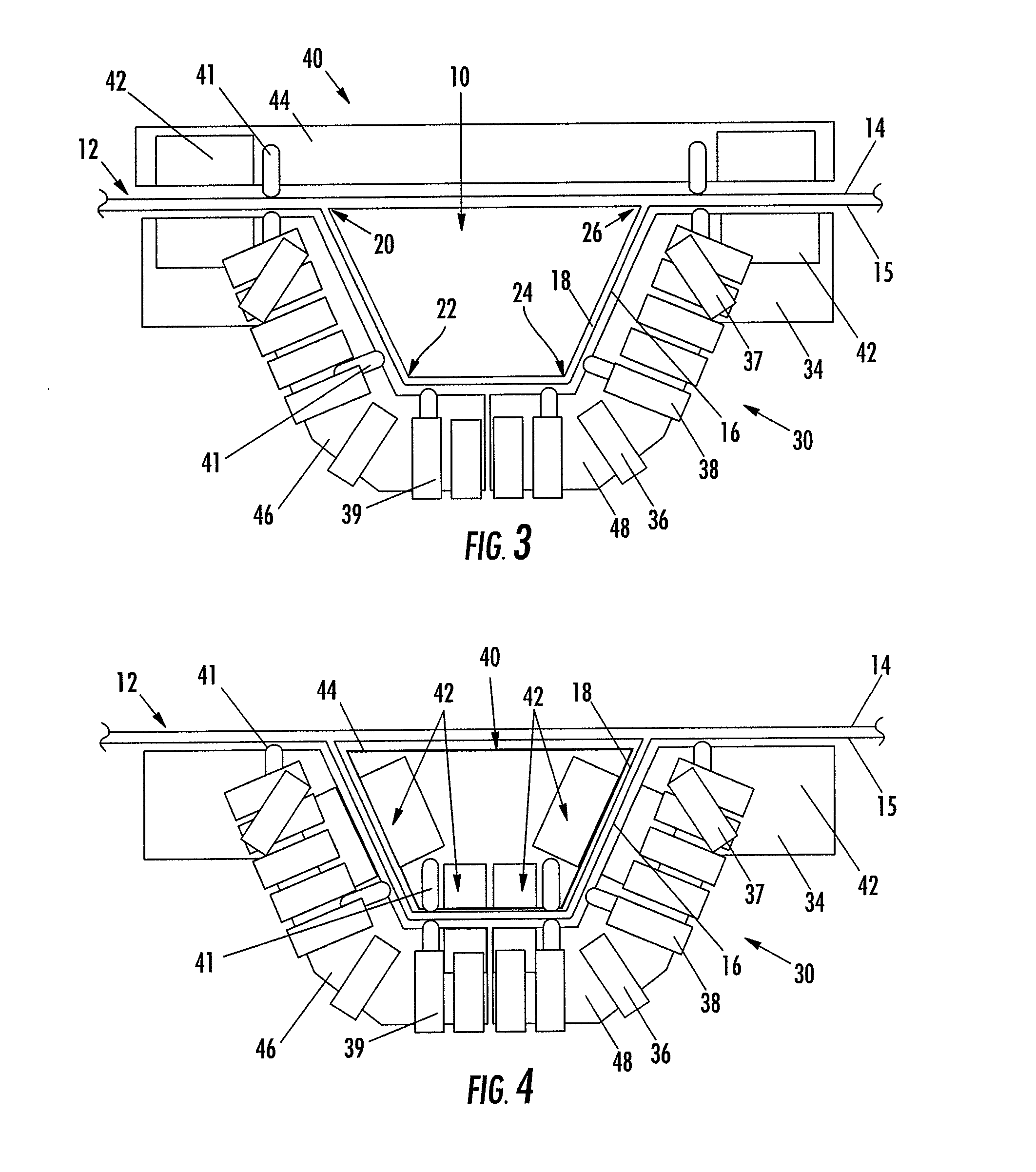Non-destructive stringer inspection apparatus and method
a stringer inspection and non-destructive technology, applied in the direction of structural/machine measurement, measurement devices, instruments, etc., can solve the problems of inability to disassemble, time-consuming manual scanning of structures, prone to human error, and inability to accurately measure or sense the position, etc., to achieve the effect of accurate position measurement or sensing
- Summary
- Abstract
- Description
- Claims
- Application Information
AI Technical Summary
Benefits of technology
Problems solved by technology
Method used
Image
Examples
Embodiment Construction
[0049] The present invention will be described more fully with reference to the accompanying drawings. Some, but not all, embodiments of the invention are shown. The invention may be embodied in many different forms and should not be construed as limited to the described embodiments. Like numbers and variables refer to like elements and parameters throughout the drawings.
[0050] Embodiments of non-destructive stringer inspection apparatus and methods of the present invention are described with respect to hat stringers, especially composite hat stringers for an aircraft fuselage. However, the apparatus and methods may also be used for similar applications which require non-destructive inspection, including other composite structures with difficult-to-inspect geometric configurations and / or remote locations. Embodiments of hat stringer inspection apparatus and methods may include magnetically coupled probes as described in co-pending applications Ser. Nos. 10 / 943,088; 10 / 943,135; 10 / 7...
PUM
 Login to View More
Login to View More Abstract
Description
Claims
Application Information
 Login to View More
Login to View More - R&D
- Intellectual Property
- Life Sciences
- Materials
- Tech Scout
- Unparalleled Data Quality
- Higher Quality Content
- 60% Fewer Hallucinations
Browse by: Latest US Patents, China's latest patents, Technical Efficacy Thesaurus, Application Domain, Technology Topic, Popular Technical Reports.
© 2025 PatSnap. All rights reserved.Legal|Privacy policy|Modern Slavery Act Transparency Statement|Sitemap|About US| Contact US: help@patsnap.com



